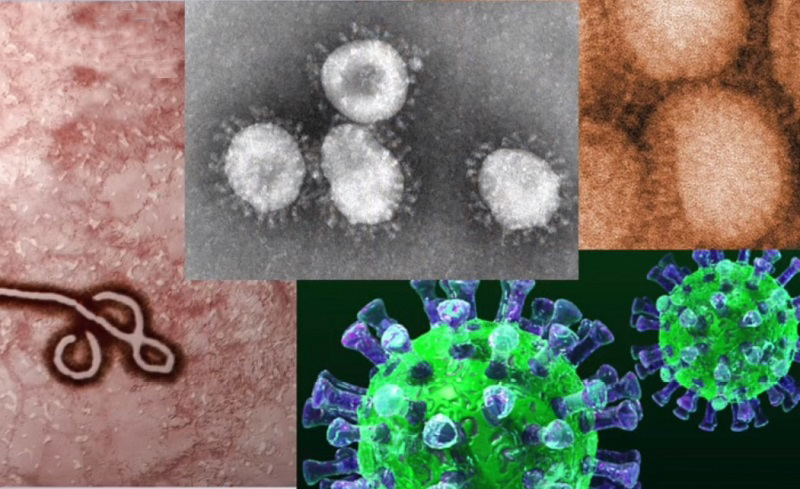You are here
D06-1: Biological Disasters

D06-1: Biological Disasters

Course Information
The Black Death, Spanish Flu, SARS, Ebola ... In the history of mankind, deadly infections and appalling disasters are inseparable. Science has given us the ability to hunt down the pathogens. However, pathogens – new and old – keep emerging and evolving in every corner of the planet. In today’s highly interconnected world, a single sneeze may set off a global pandemic.
Are you prepared for the next pandemic? How can we prepare for disasters caused by infectious diseases? This e-learning module is about biological disasters, the third in our series of e-learning modules on CBRN emergencies.
The module is designed to be mobile-friendly so that you can study anytime, anywhere.
If you want to know more about the topics discussed in the videos, you can refer to the list of suggested readings at the end of each session. You can also test your knowledge by taking multiple-choice (MCQ) test. An electronic certificate will be awarded to you upon completion of the module.
Enroll now and learn more about biological disaster!
Upon completion of this course, you will be able to:
- describe the relationship between infectious diseases and disasters
- understand some basic concepts about influenza
- recognize the threat of emerging infectious diseases and the driving forces behind them
- understand the basic concepts about bioterrorism and the principles of response.
- describe the basic principles in community response to an infectious disease disaster
This module is organized into five sections:
- Section 1, Dr LP Leung will give you an overview of the subject of biological disasters and explain the relationship between infectious diseases and disasters.
- Section 2, Dr Kelvin To will talk about influenza viruses and how they cause pandemics.
- Section 3, Professor Malik Peiris will go through some of the emerging infections that have potentials of causing biological disasters.
- Section 4, Dr Rex Lam will introduce to you some basic concepts about bioterrorism and the principles of response.
- Section 5, Dr Thomas Tsang will discuss how we can best respond to an infectious disease disaster in the community.
If you are interested to know how a patient’s journey is like in a hospital isolation ward, you can join our online virtual tour at the end of our module.
The knowledge is applicable to the community and the general public. For healthcare professionals who want to know more about the topic, they can go through the recommended readings.
The course is delivered in the form of a series of short videos organized in 5 sections.
Section 1:
- Basic concepts of disaster, infectious disease, and biological disaster
- The relationship between disaster and infectious disease
- The definition of hazard, vulnerability, and capacity
- The interplay between the pathogen, host, and environment in infectious disease disaster
Section 2:
- What is influenza?
- The concept of antigenic drift and antigenic shift
- The difference between seasonal influenza, influenza pandemics, and avian influenza
- The spread and body invasion of influenza virus
- The clinical presentations of influenza
- The complications of influenza and risk factors
- Treatment of influenza
- Prevention of influenza
Section 3:
- What are emerging and re-emerging infectious diseases?
- The reasons why novel infections continue to emerge
- How can we respond to emerging and re-emerging infectious diseases
- The ecology of zoonosis and emerging infectious diseases
- The concept of ‘One Health’
Section 4:
- The definition of bioterrorism
- The challenges in bioterrorism response
- How can we know there is a bioterrorist attack?
- The classification of biological agents as weapons
- The clinical presentations of anthrax
- The clinical presentations of smallpox
- Bioterrorism preparedness and response
Section 5:
- Disease surveillance
- Isolation and quarantine
- Outbreak investigation and source control
- Hygiene and infection control
- Vaccination and chemoprophylaxis
- Risk communication
You need to obtain >70% of the total score in MCQs AND complete the course evaluation to pass the course.
There are 3-8 questions of MCQs at the end of each section.
We would like to thank the staff of the Hospital Authority Infectious Disease Centre of Princess Margaret Hospital and volunteers from the Auxilliary Medical Service for their help in filming the patient journey in an isolation ward.
Also, our thanks go to the following institutions, organizations, and publishers for granting us free permission to use of their copyrighted materials:
- World Health Organization
- World Bank
- Springer Nature
- Massachusetts Medical Society
- National Academic Press
- South China Morning Post



